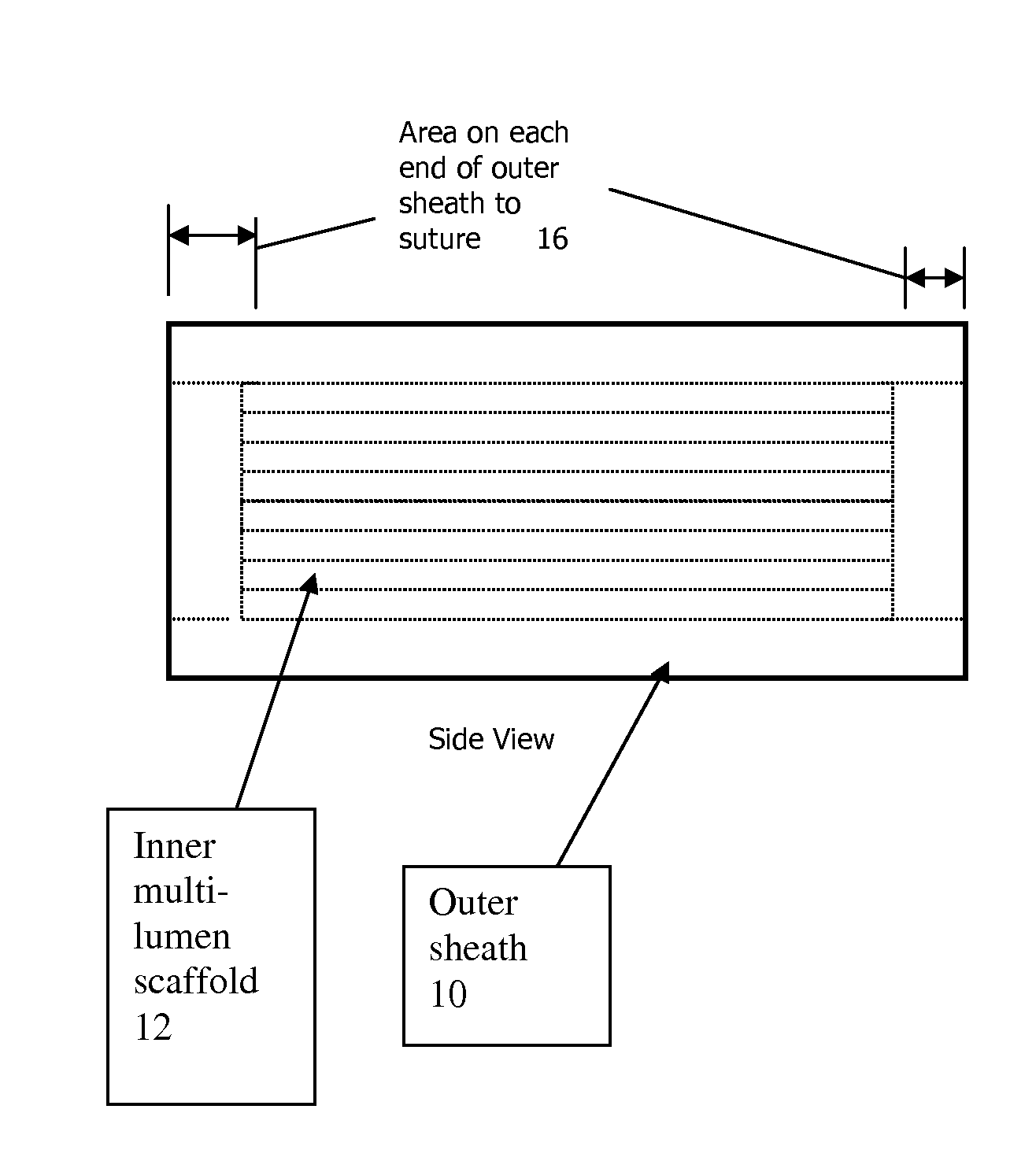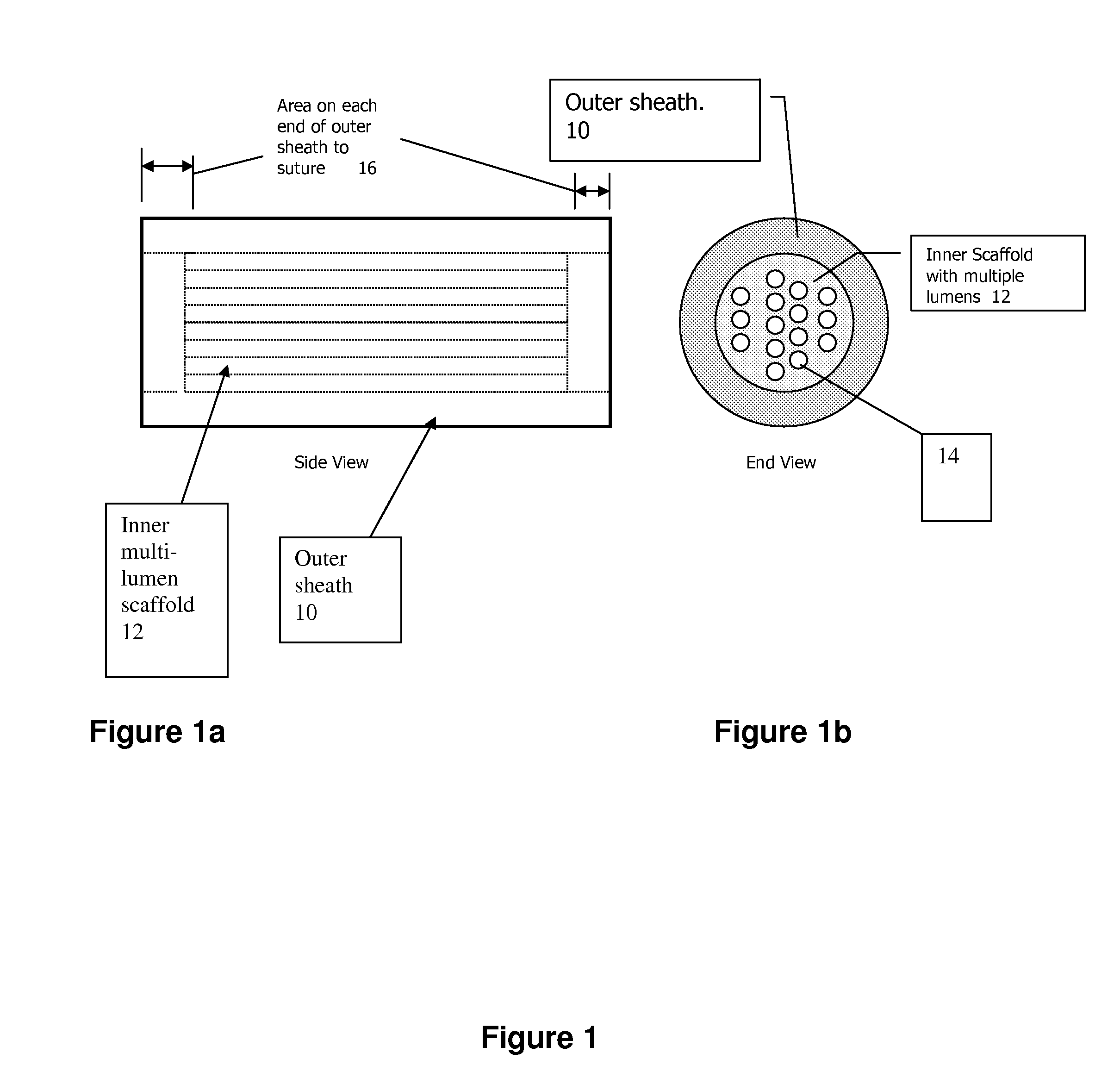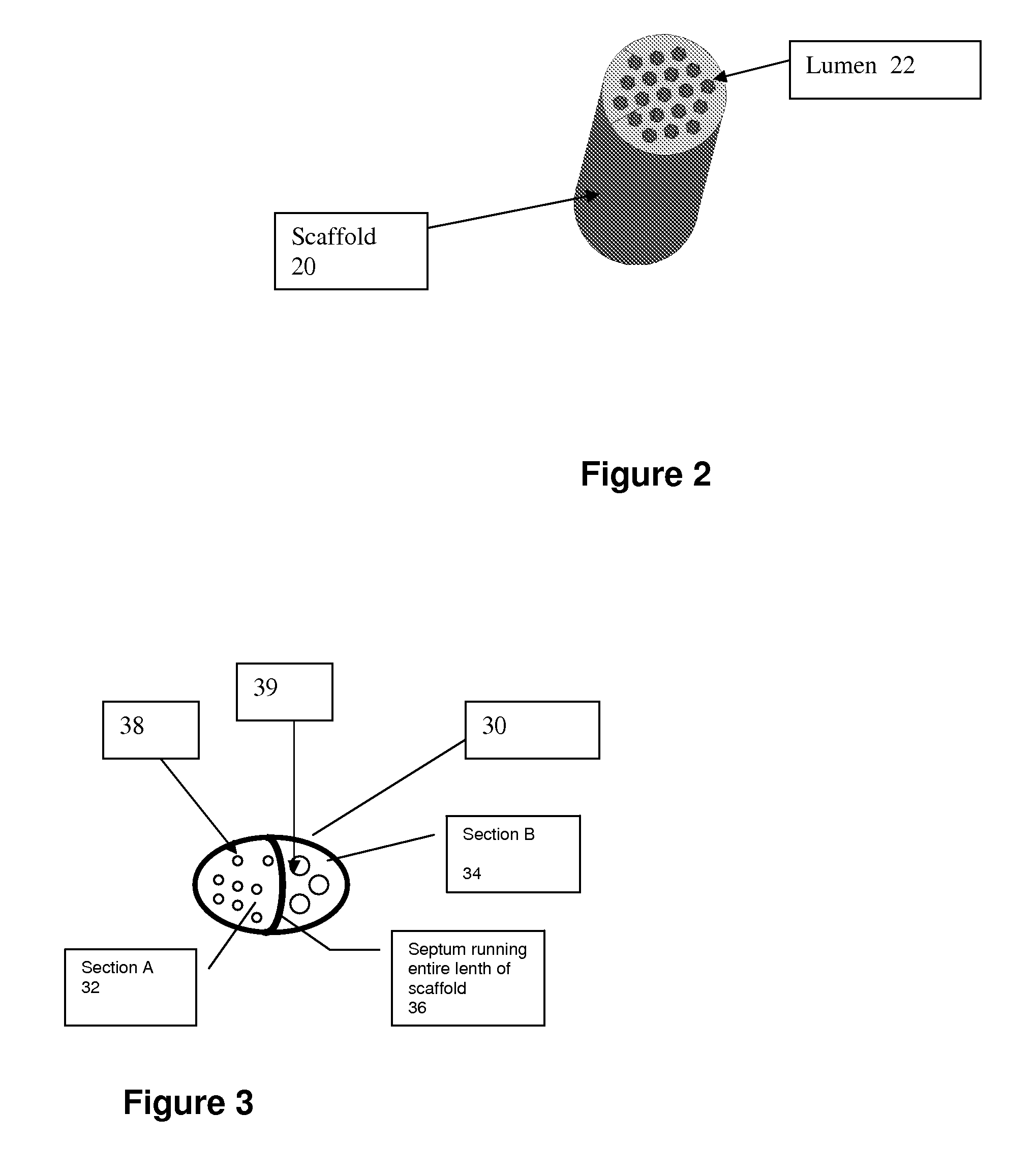Nerve regeneration device
a nerve regeneration and nerve technology, applied in the field of medical devices, can solve the problems of scaring and pain of patients, limited amount of nerve tissue available, and numbness at the donor site, etc., and achieve the effects of promoting nerve regeneration and repair, limiting axon dispersion, and limiting axon dispersion
- Summary
- Abstract
- Description
- Claims
- Application Information
AI Technical Summary
Benefits of technology
Problems solved by technology
Method used
Image
Examples
Embodiment Construction
[0037]The present invention pertains generally to medical devices and, in particular, to implantable tissue guidance conduits for the regeneration and / or self-repair of nerve defects in patients with injured, severed or potentially otherwise defective tissue (particularly nerves) suitable for repair utilizing the invention. The devices are particularly useful for the repair and regeneration of peripheral nerves.
[0038]A tissue guidance conduit of the present invention comprises at least one scaffold through which runs one or more lumens. The scaffold is formed of a soft material, preferably a polymer that is biocompatible, such as a hydrogel synthesized to hold a charge as described herein. The scaffold may also further comprise one or more bio-active agents, such as nerve growth factors, that promote nerve regeneration (if being used to regenerate nerve tissue) or other bio-active agents.
[0039]The scaffold(s) is optionally surrounded by an outer sheath. The outer sheath is formed of...
PUM
| Property | Measurement | Unit |
|---|---|---|
| Length | aaaaa | aaaaa |
| Length | aaaaa | aaaaa |
| Thickness | aaaaa | aaaaa |
Abstract
Description
Claims
Application Information
 Login to View More
Login to View More - R&D
- Intellectual Property
- Life Sciences
- Materials
- Tech Scout
- Unparalleled Data Quality
- Higher Quality Content
- 60% Fewer Hallucinations
Browse by: Latest US Patents, China's latest patents, Technical Efficacy Thesaurus, Application Domain, Technology Topic, Popular Technical Reports.
© 2025 PatSnap. All rights reserved.Legal|Privacy policy|Modern Slavery Act Transparency Statement|Sitemap|About US| Contact US: help@patsnap.com



